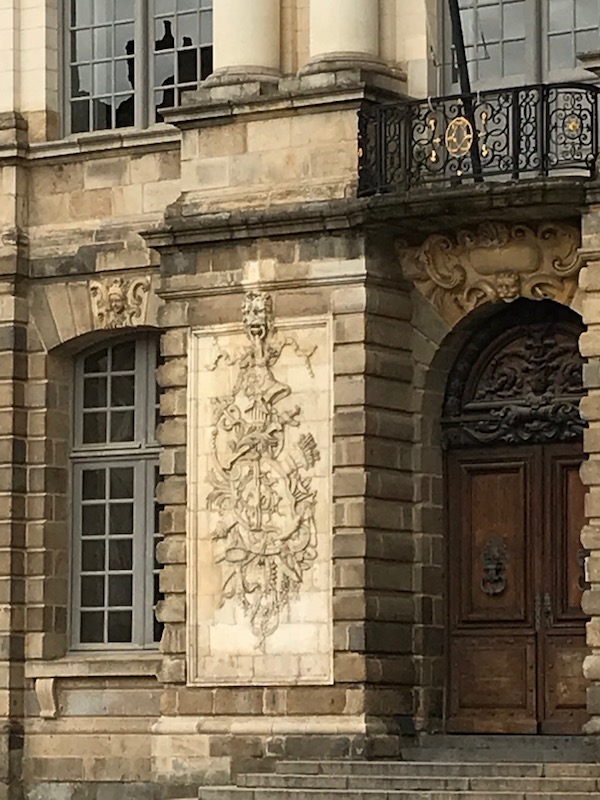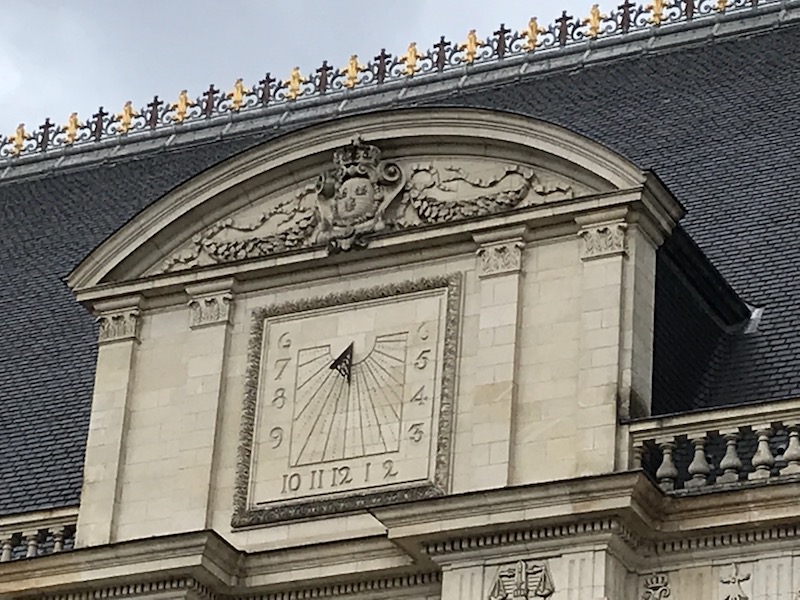Our Blog - Rennes, France
Rennes is one of Brittany's liveliest cities, thanks to around 40,000 students. There are many grand public edifices, many of them erected after fire swept through the city in 1720. The remaining cobbled streets and 15th century half timber houses form an interesting contrast to the classical feel of the cathedral and Jacques Gabriel's disciplined 18th century granite buildings, broad avenues, and spacious squares.
During our visit to Rennes, the city hosted a couple matches of the FIFA Women's World Cup (Soccer). We played a round of golf at a resort just outside of town where the French and Japanese teams were staying overnight.
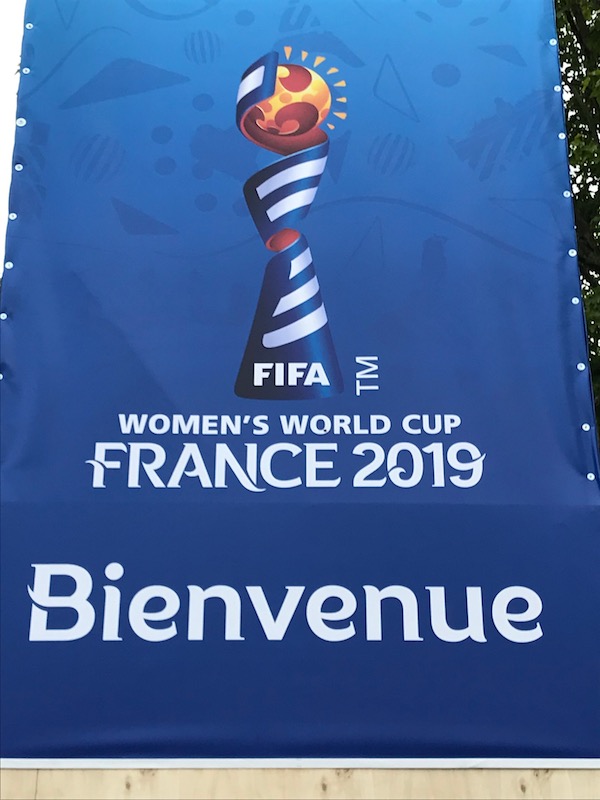
Throughout Brittany, we would try to order a "Coke Zero" and the majority of the time, what they had was Breizh Cola Zero. Breizh is the Breton word for Brittany, and this brand is only sold in Brittany. The brand was launched in 2002 after one of the owners noticed colas from the United States in a home in the middle of the Guatemalan jungle during a trip in 1997. And yea ... it tastes about the same :-)

From the late Middle Ages to the end of the Ancient Régime, a multitude of half-timbered houses were built in Brittany, and in particular in Rennes. There are over 250 of them left in the city, many of them clustered on several streets. Wood was an abundant and cheap raw material, which is why this building technique was popular in the 14th to 15th centuries, and continued to be used up until the 18th century. One other reason for the large number of half-timbered architecture here is that there was a lack of building stone since the earth nearby is mostly a chalky shale. Mind you ... there is a downside ... the great fire in Rennes in 1720 destroyed between 850 and 900 wooden houses and there was a royal edict that banned this type of construction for new houses.
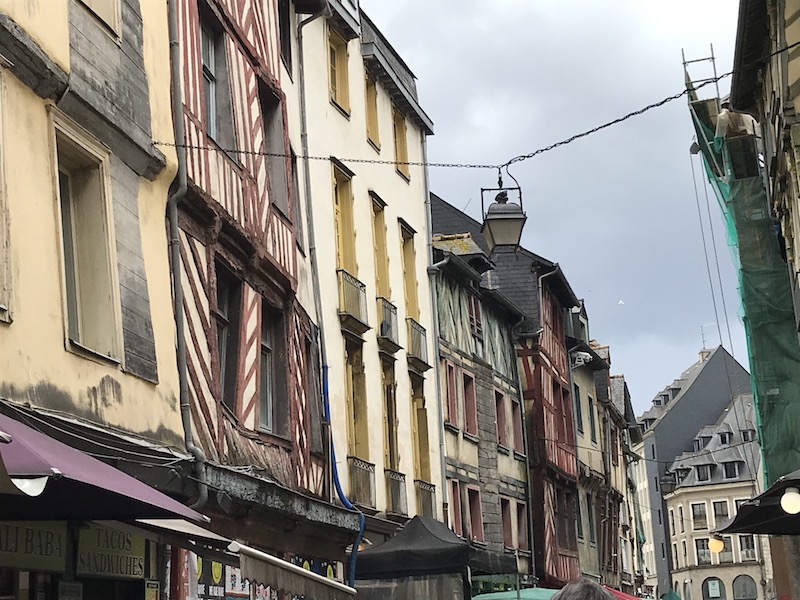

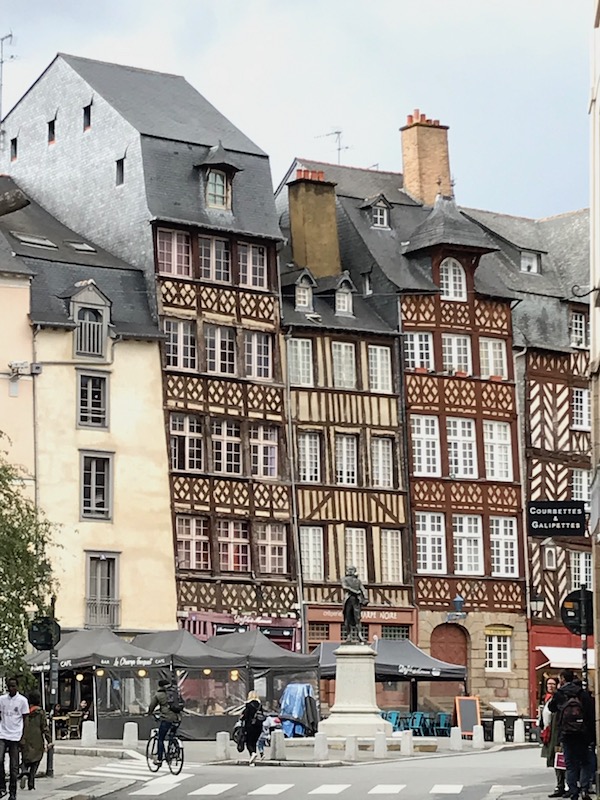
This is a Heyraud shoe store, on rue de Toulouse .... the wood work is just magnificent!

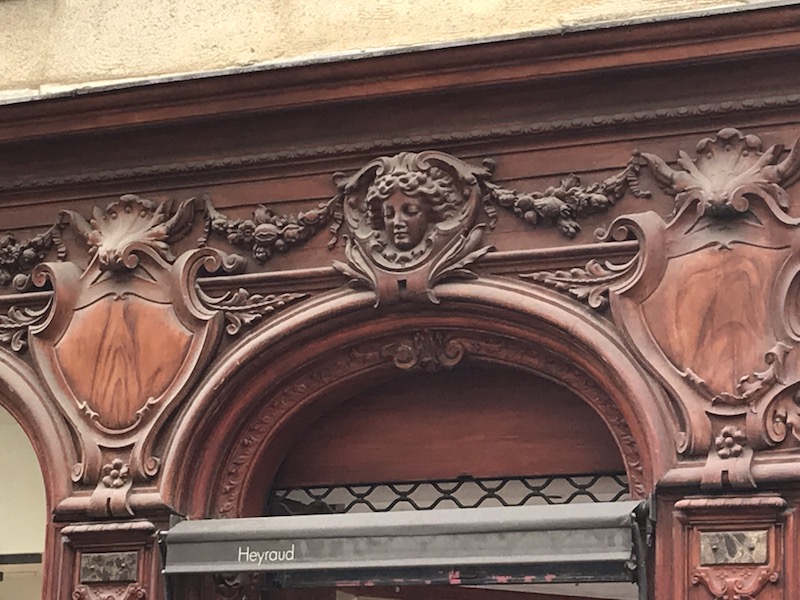
The Hotel de Ville was completed in 1743 and consists of two classical buildings connected by a quarter-circle recess, topped with a clock tower.
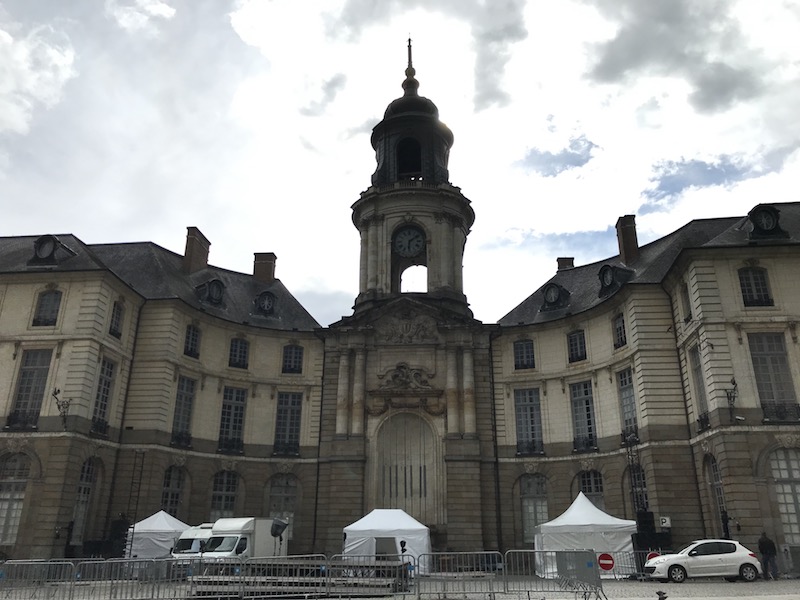
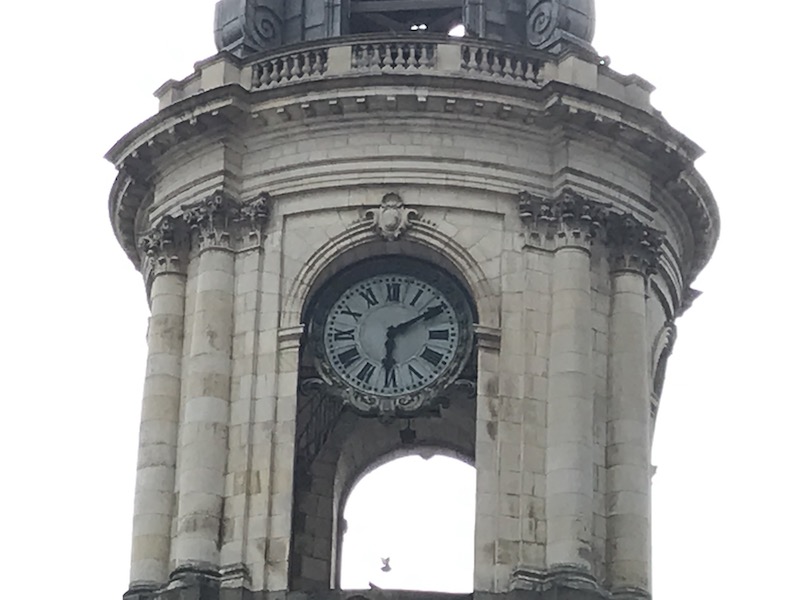

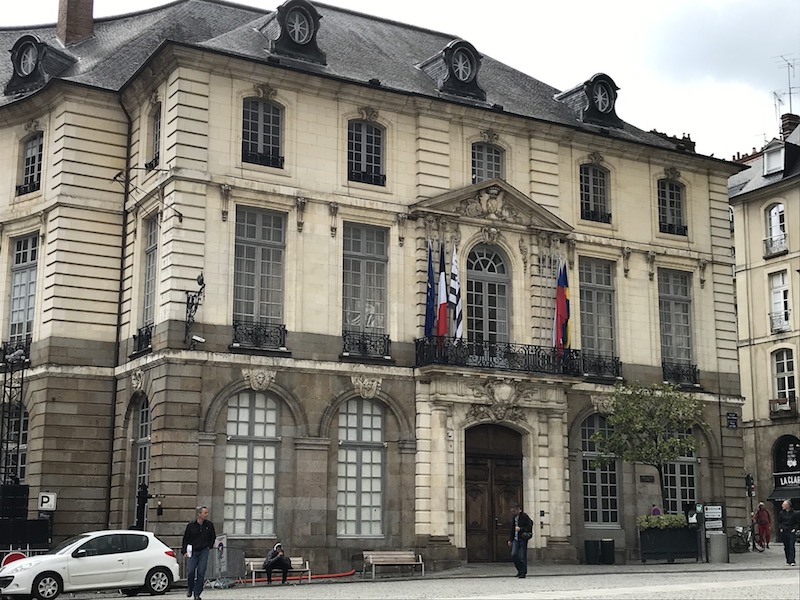
In designing the Opera House, the architect responded to the 18th-century concave Hotel de Ville on the other side of the square and created the a round building protected by muses carved by François Lanno.
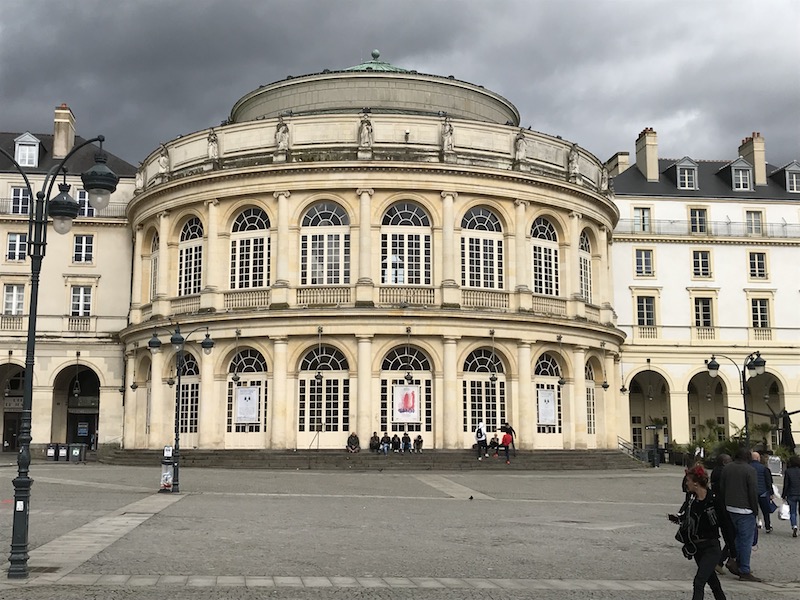

Place de la République is home to a huge building, called the Palais du Commerce. It was built in the end of the 19th century and previously housed the stock exchange. The building is in the shape of a "U" facing north, and has bays and arches all along the side.
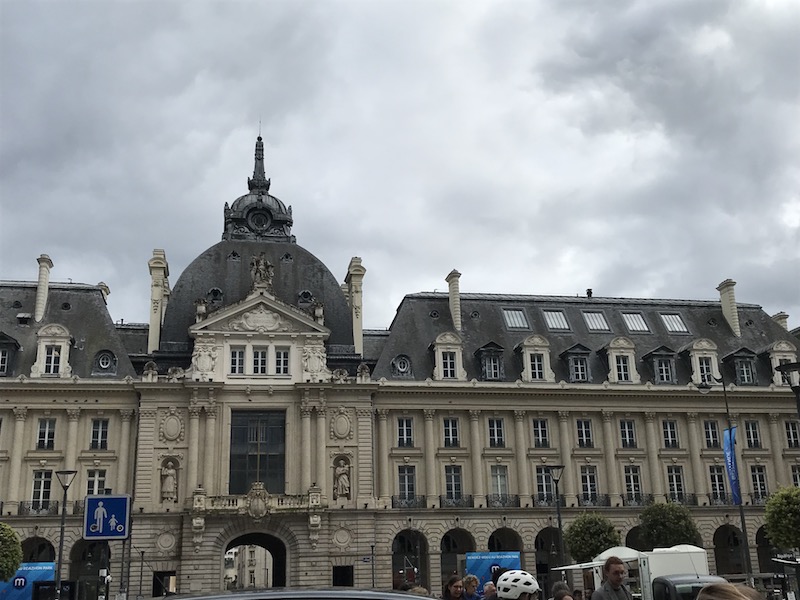


This Baroque-style Église Toussaints, or All Saints Church, was completed in 1651 before collapsing in 1715 and being rebuilt again in 1764. The interior is very clean, partially because it went through a restoration in 2013. It has a lovely carved wood pulpit and the main altarpiece dates from 1653.


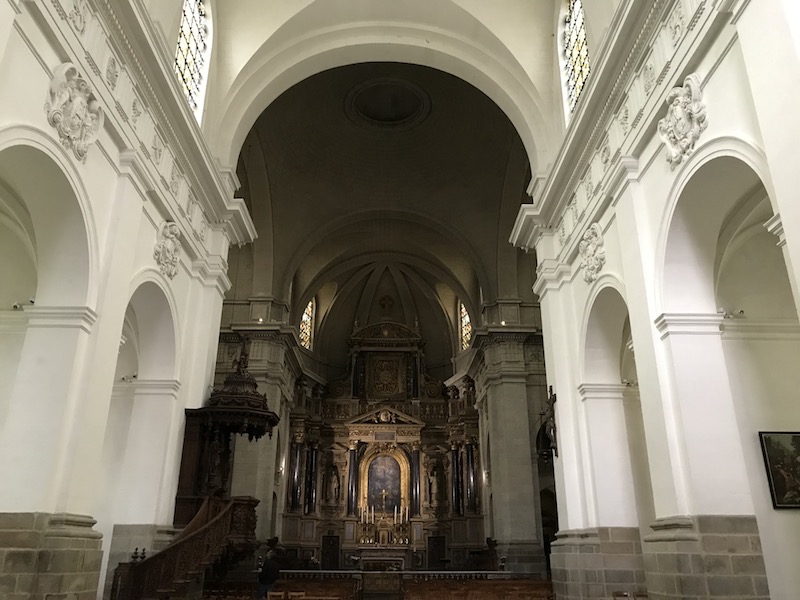
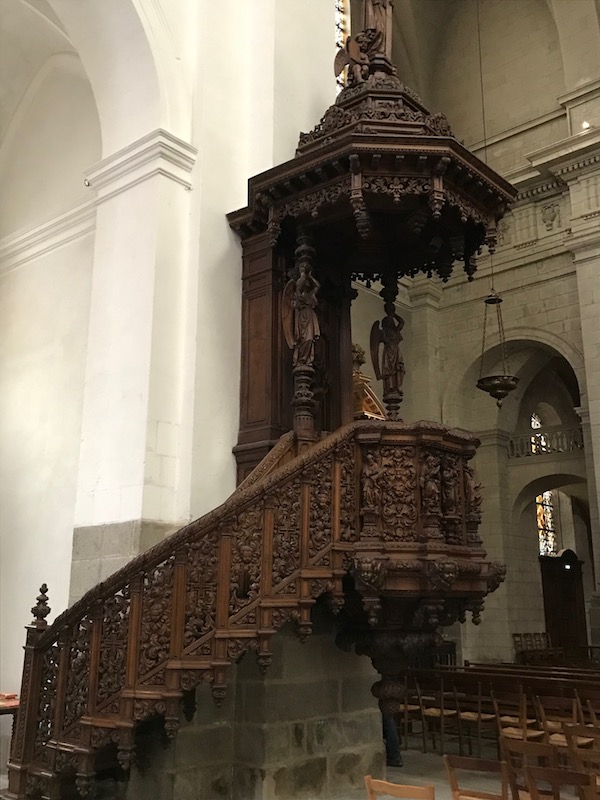
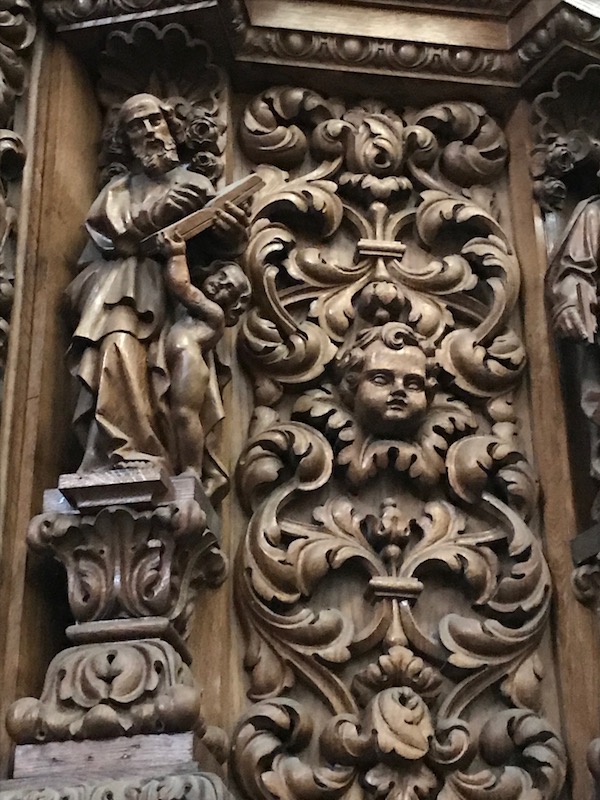
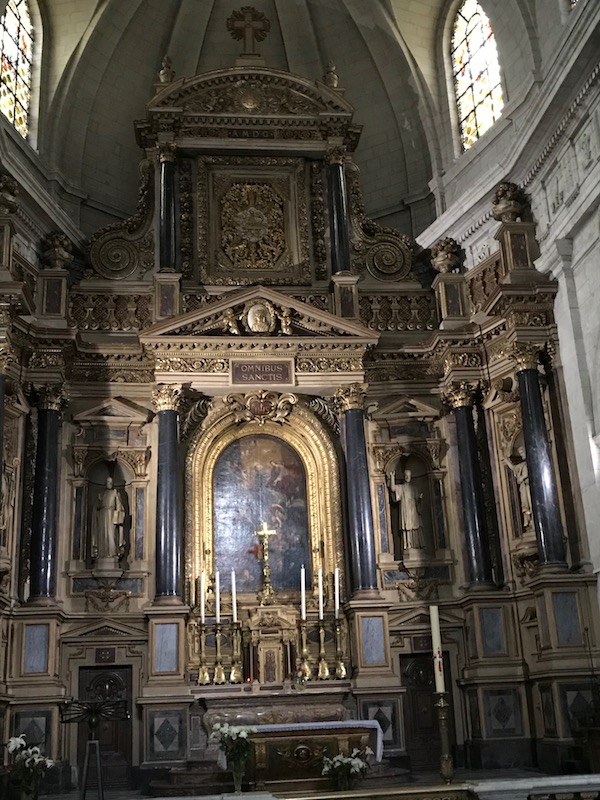

The stained glass windows are not original and this one is in memory to those who died between 1939 and 1945 during WW II.
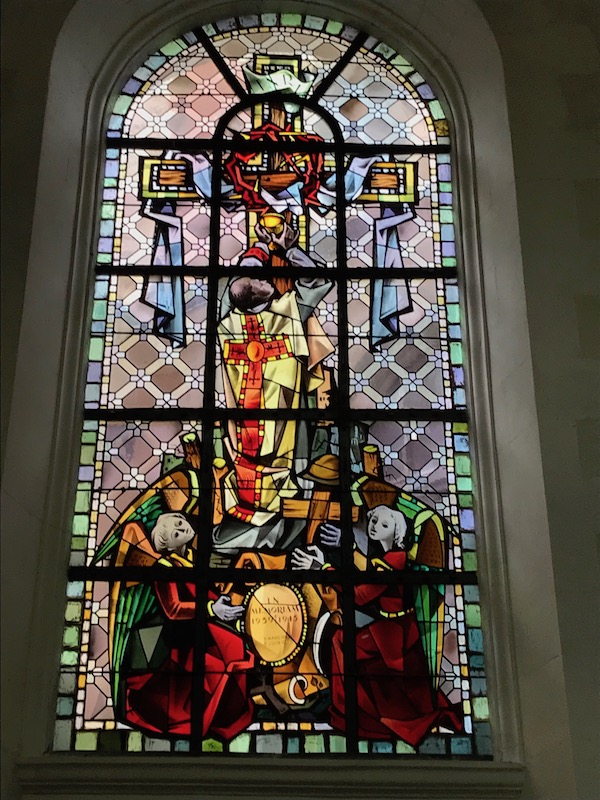
This huge building in the middle of Jardin Saint-Georges is the a former Abbey, built in 1670. The main feature is the long gallery with nineteen two-story windows matching granite arches. The mansard roof features twenty-three dormer windows and above the three central windows is a large semi-circular pediment surmounted by a stone cross. The pediment is sculpted with the arms of the abbey, flanked by figures of justice and peace. The gardeners also have gotten into the FIFA spirit!

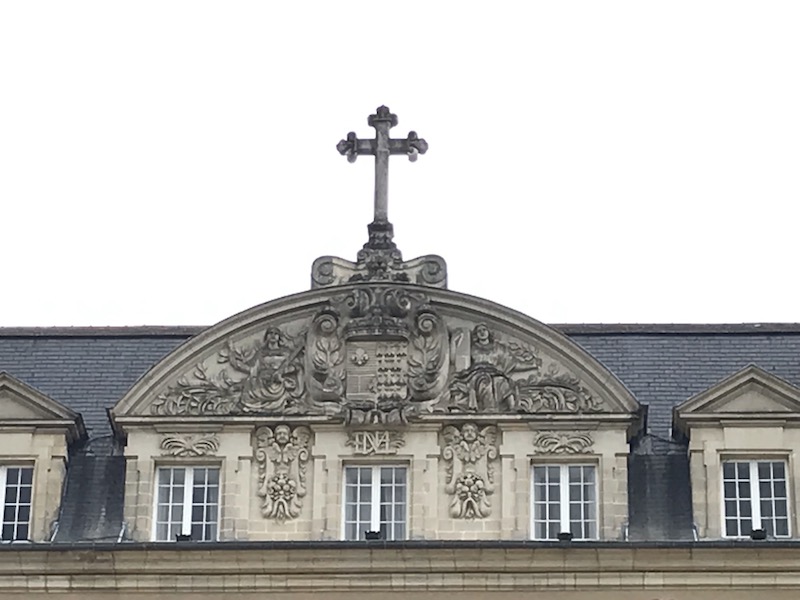

Constructed between 1923 and 1926, the Piscine Saint Georges (the municipal swimming pool) is housed in a building with an art nouveau–meets–art deco crossover style.


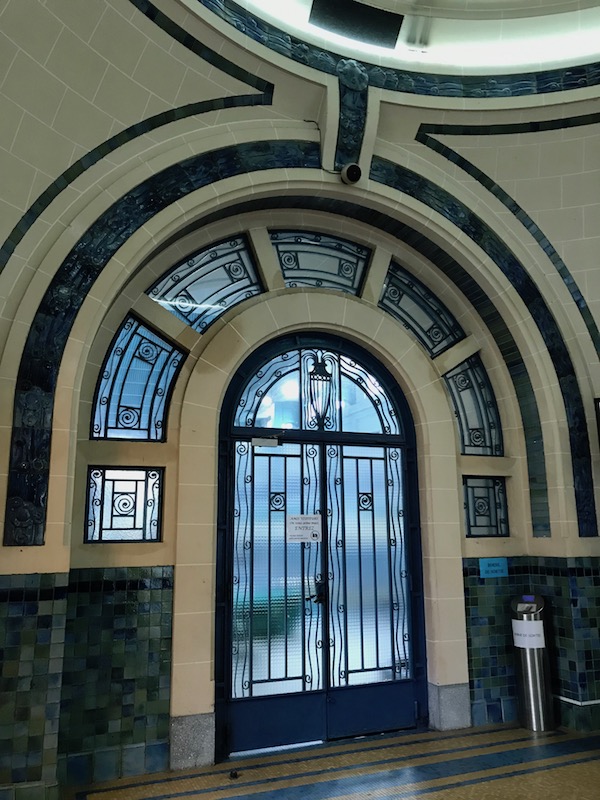
We took a stroll through Parc du Thabor, a large formal French garden with a waterfall. It was nice to see the gardeners had put up a few decorative items for the FIFA World Cup.
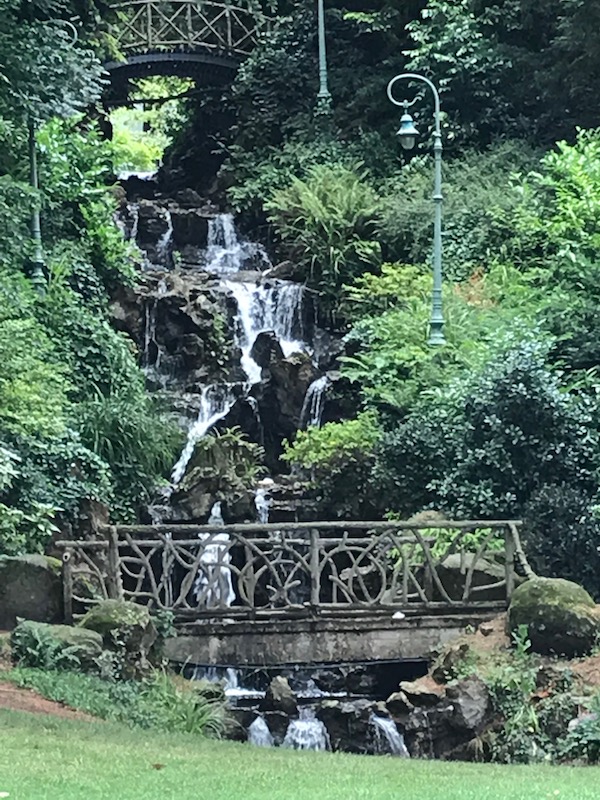
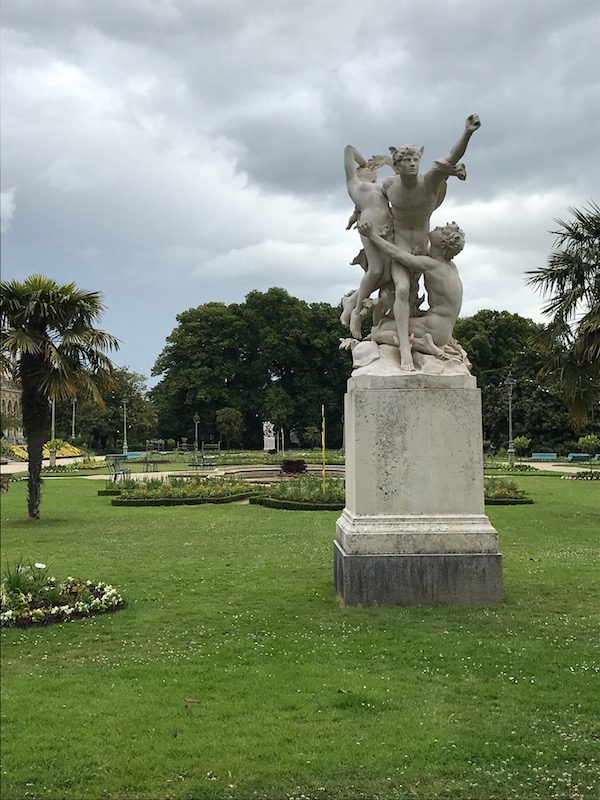
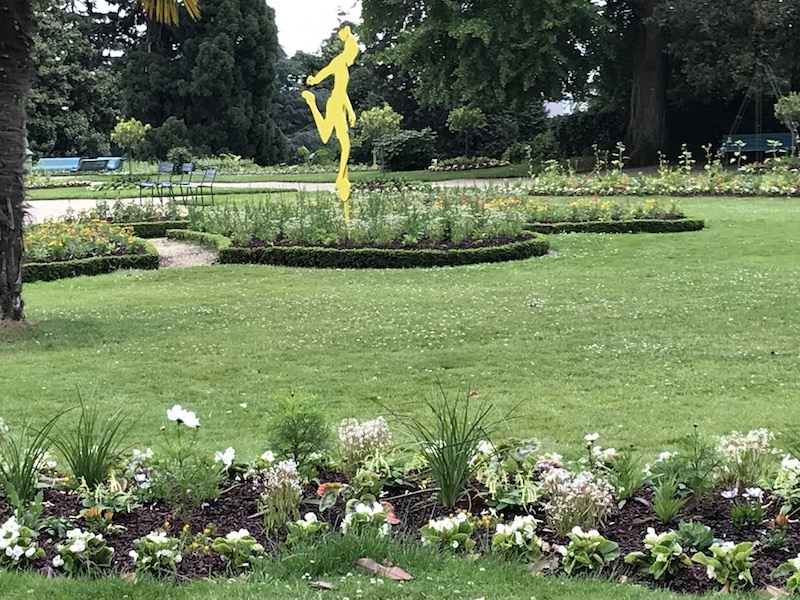
Originally the nome of the Breton Parliament and now of the Rennes law courts, the Parlement de Bretagne building was designed in 1618. It was lucky enough to escape the fire of 1720 but went up in flames in 1994, following a demonstration by Breton fishermen demanding state subsidies. It left only a charred shell although much of the artwork was saved by firefighters. We happened to be there on a day it was closed, so only pictures of the outside.

